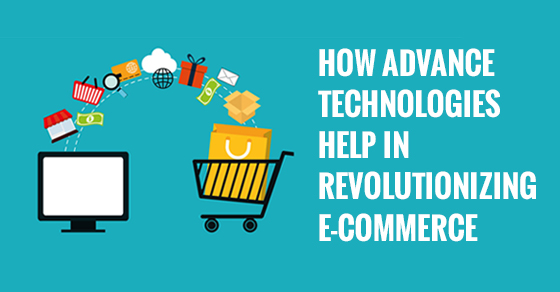"Phases Of Building A Branding Strategy"
"6 Tips To Improve eCommerce Store Sale This Valentine's Day"

The evolution of technology is not just faster than ever; it's engaging than ever: within the retail and e-commerce space in shaping customers' behavior and interaction with brands. Understanding shoppers’ preferences and behavior is the key to success, a smart retailer knows that well and utilizes technology to capitalize on the shoppers’ needs and personalize offerings to significantly increase their bottom lines.
Instead, today's technology helps customers to keep track of their orders and finding new ways in which customers interact in real-time with retailers.
Advanced technology trends, in turn, are influencing the big picture and opens new customer transactions, new opportunities for both customers and retailers. Customers now have access to different filters that help them to compare prices, find alternatives, locate nearby in-stores and receive coupons.
Retailers can take a wide range of advantages as well, as technology helps them to make stronger connections with customers to shape and conquer a new retail brand.
Altogether, technology is revolutionizing e-commerce stores by adding value that drives more customer transactions. Here’s how:
The customer journey starts with a potential customer thinking about a product or service, then looking for it and then purchasing it. The most important line a retailer needs to be concerned about is the ‘line of conversion’ – where a prospect actually converts into a customer. But, the journey does not end there and in fact, this should start a new customer relationship with the retailer.
The focus needs to shift in order to engage the customer, retain the customer, nurture the relationship, provide personalized services anywhere & anytime and finally to grow the customer’s lifetime value (CLTV).
Omni-channel retailing not just about having a presence on multiple funnels or giving your customer the option to shop on the digital platform. Mobile, marketing, merchandising, fulfillment, shipping, marketplaces… all of it, needs to be taken into account for a robust omnichannel retailer.
Customers are now using their smartphones as their personal shopping assistant and it’s not just limited to their online shopping. Smartphones play a significant role in their offline shopping as well. The key to create and retain happy customers is to upgrade the e-commerce to a connected commerce platform.
On one hand, today's customers are demanding for rich and responsive mobile experience, 24x7 flawless brand presence, It's the fact that technology is making personalization standard. On the other customers are tired of an overload of advertisements. If the advertisements are not well targeted and well segmented, you will miss your target customer. Smartphones offer personally relevant shopping experiences for customers and retailers need to have a deep mobile presence to support that. To understand personalization standards for that you need to follow the connected behavior of today’s customers.
With the advent of personal assistants, retailers can understand the customers’ tendencies and affiliations. Personalized attention in marketing and customer support is more important than ever, retailers must adapt the new customer service standards set by advanced technologies. This means you have to connect with customers on various funnels to build a loyal customer base.
Customers are increasingly switching between online and offline journeys. Customers no longer just go to the nearest store, they go to the nearest screen and expect the retailer to be there. Similarly, when customers experience a brand, they want the same experience both in-store and on-screen.
Each phase of the customer journey is critical, so retailers have to ensure they are also staying connected to the customer throughout. So, to create a successful e-commerce platform for customers, retailers need to be connected with all the departments and line-of-business applications. That means a retailer has to be well connected to the digital platform and connected to their customers digitally.
It is clear from customer behaviors that analytics with deep AI/ML integration and a multi-screen presence are a must for building a successful e-commerce platform. The central piece is a customer-centric data to work very closely with the AI/ML analytics for segmentation and cross-channel planning to create the connected experience across screens. Implementation of Chat-bots and real-time recommendation engines will be key elements as well.
It is important for retailers to consider the ever-greater opportunities by new developments in technology and digital products. Both the hardware and software can enable an enhanced consumer experience that can mature and fit together with your e-commerce platform. Advancements in the cloud, the Internet of Things, and with smart tags, are allowing retailers to consider new possibilities and services at a lower price point than ever before.
The new possibilities and services could include anything from smart screens to smart mannequins that offer personalized content to shoppers, and from iPads to enable in-store browsing to so-called “magic mirrors” that can help shoppers shop different styles in different platforms. New technology could put retail at the front of the queue for innovative and personalized services.
Lastly, e-commerce is increasingly becoming a global and retailers can present a global catalog to a customer’s screen are more likely to attract more business. Once a retailer adapts the advanced technologies, it will convert their connected customers to happy customers.